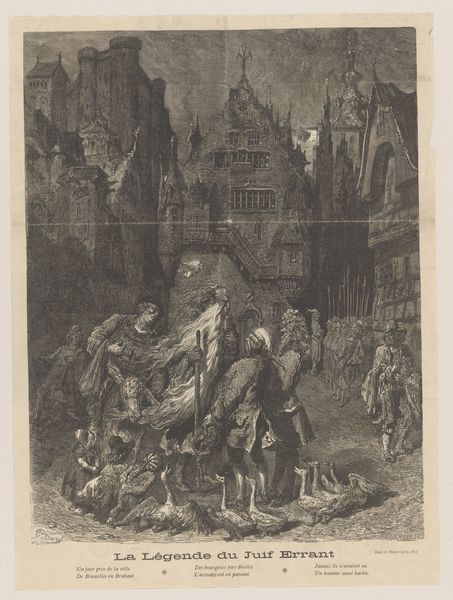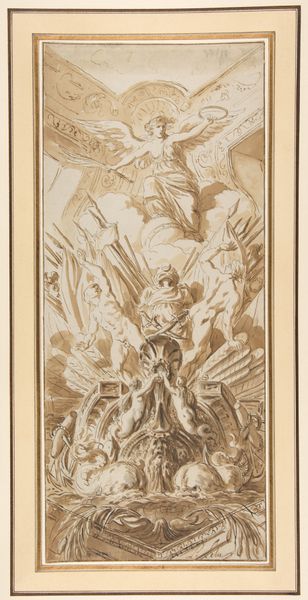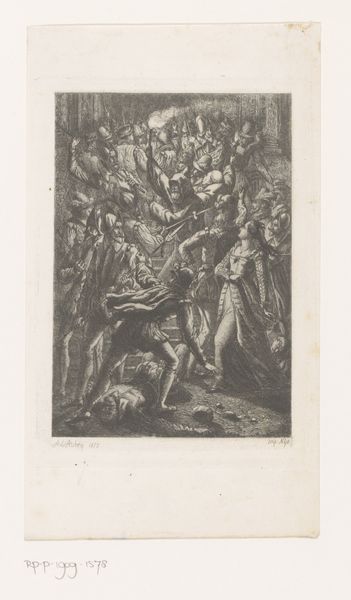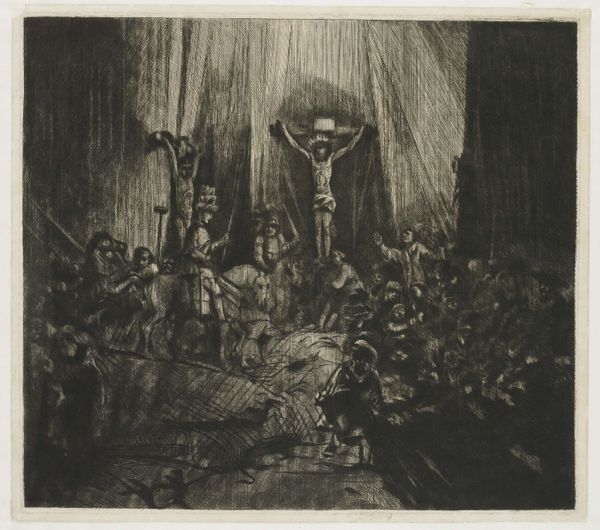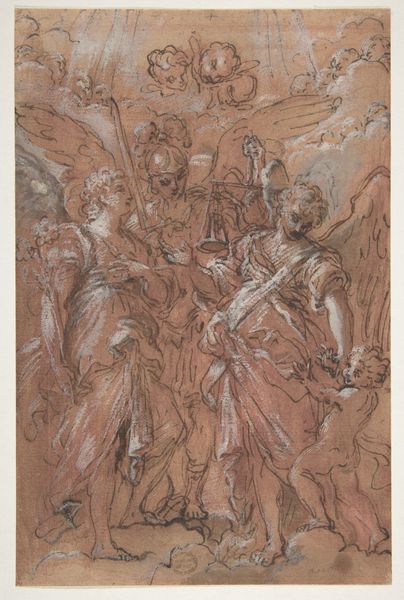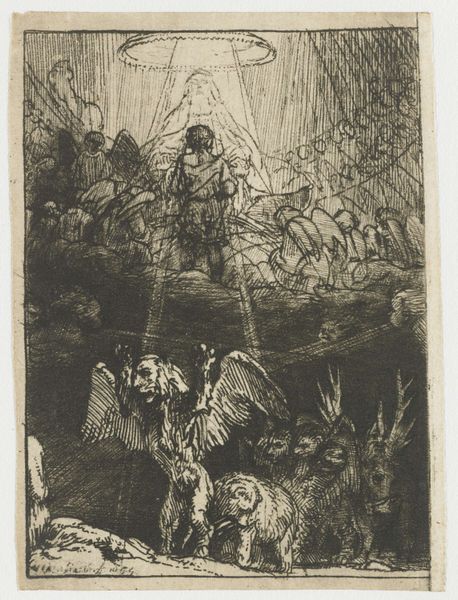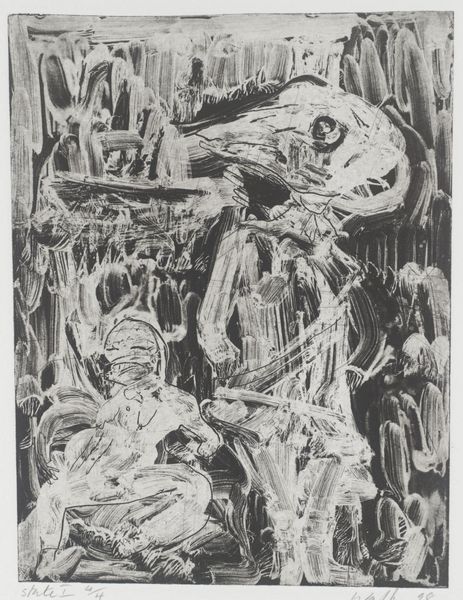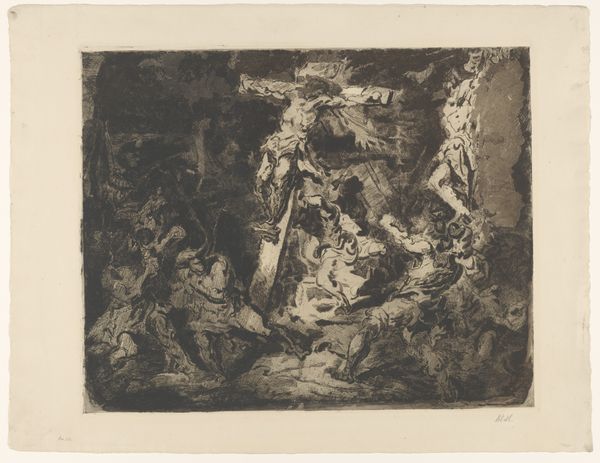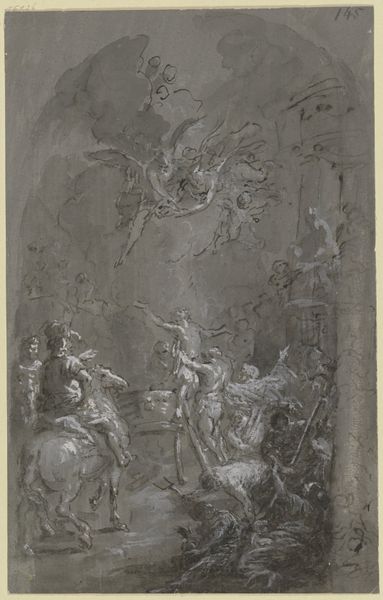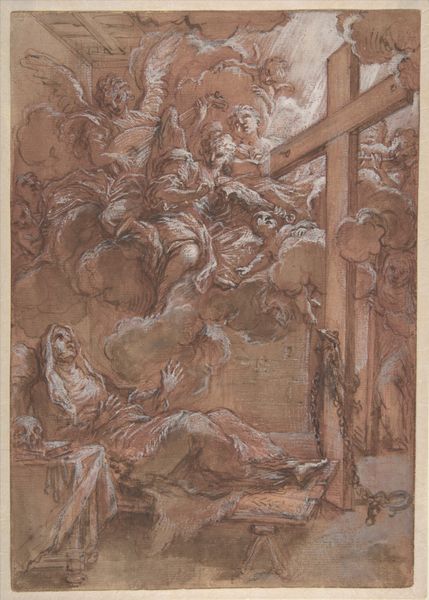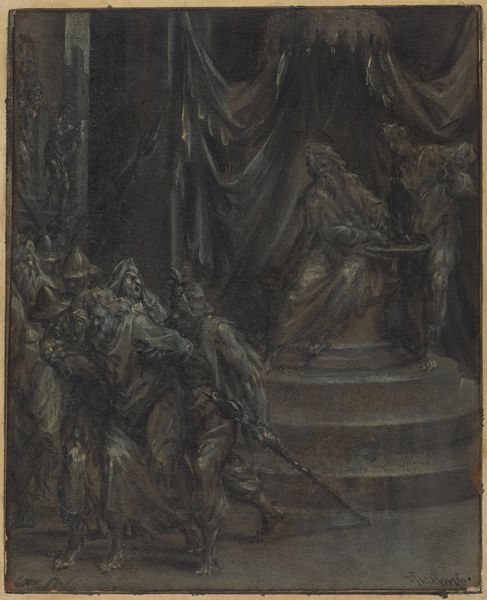
Dimensions: height 708 mm, width 523 mm
Copyright: Rijks Museum: Open Domain
Editor: So, this is "Satan met demonen in een gotische kathedraal," by Louis Boulanger, made in 1829, and it's a charcoal drawing. It feels... oppressive, all that dark charcoal. I’m really struck by the contrast between the seemingly pious scene in the pews versus the chaotic, writhing mass in the foreground. What jumps out at you? Curator: For me, the fascinating aspect lies in understanding the socio-economic context surrounding the production of an artwork like this. Think about charcoal: It’s a readily available material, cheaper than oils. Who had access to these gothic cathedrals? Boulanger isn’t just depicting a scene; he is also responding to societal constraints and using material to create access and critique simultaneously. Where and when was this drawing circulating? How were such scenes received, and what statements was Boulanger able to make given his choice of material? Editor: That's a good point; charcoal democratizes art making to an extent. So, the medium itself allowed him a certain freedom of expression? I hadn't thought about the price of materials influencing subject matter like that. Curator: Exactly. And it extends beyond price. Consider the labor involved. Charcoal, though readily sourced, demands physical engagement. The very act of applying it – smudging, layering – embodies a physical engagement with the subject matter far more intimate than perhaps, say, a pristine oil painting on canvas might allow. Look at the details he was able to capture. It allows you to ask how his choice of medium might have expanded his reach. Editor: So it's less about just the image itself, and more about how it was made and what resources were required to bring it into existence? That makes you think about art very differently. Curator: Precisely! And considering what kinds of stories such methods enabled at that time for makers and consumers alike. Editor: This has been incredibly insightful. I never would have considered these factors on my own, and it is definitely going to make me think harder when observing materials and how artwork gets produced.
Comments
No comments
Be the first to comment and join the conversation on the ultimate creative platform.
